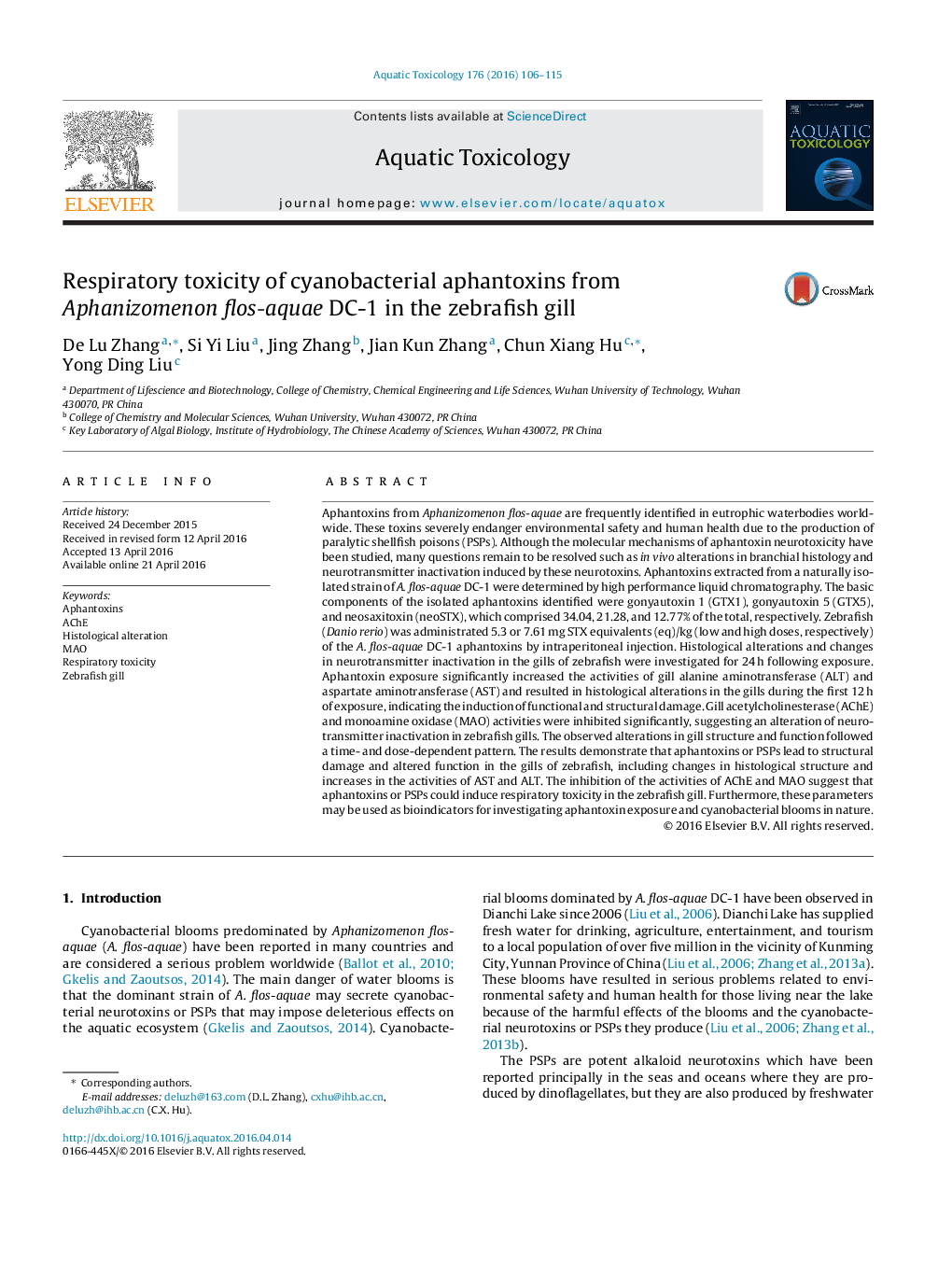| کد مقاله | کد نشریه | سال انتشار | مقاله انگلیسی | نسخه تمام متن |
|---|---|---|---|---|
| 6381944 | 1625929 | 2016 | 10 صفحه PDF | دانلود رایگان |
عنوان انگلیسی مقاله ISI
Respiratory toxicity of cyanobacterial aphantoxins from Aphanizomenon flos-aquae DC-1 in the zebrafish gill
دانلود مقاله + سفارش ترجمه
دانلود مقاله ISI انگلیسی
رایگان برای ایرانیان
موضوعات مرتبط
علوم زیستی و بیوفناوری
علوم کشاورزی و بیولوژیک
علوم آبزیان
پیش نمایش صفحه اول مقاله

چکیده انگلیسی
Aphantoxins from Aphanizomenon flos-aquae are frequently identified in eutrophic waterbodies worldwide. These toxins severely endanger environmental safety and human health due to the production of paralytic shellfish poisons (PSPs). Although the molecular mechanisms of aphantoxin neurotoxicity have been studied, many questions remain to be resolved such as in vivo alterations in branchial histology and neurotransmitter inactivation induced by these neurotoxins. Aphantoxins extracted from a naturally isolated strain of A. flos-aquae DC-1 were determined by high performance liquid chromatography. The basic components of the isolated aphantoxins identified were gonyautoxin 1 (GTX1), gonyautoxin 5 (GTX5), and neosaxitoxin (neoSTX), which comprised 34.04, 21.28, and 12.77% of the total, respectively. Zebrafish (Danio rerio) was administrated 5.3 or 7.61Â mg STX equivalents (eq)/kg (low and high doses, respectively) of the A. flos-aquae DC-1 aphantoxins by intraperitoneal injection. Histological alterations and changes in neurotransmitter inactivation in the gills of zebrafish were investigated for 24Â h following exposure. Aphantoxin exposure significantly increased the activities of gill alanine aminotransferase (ALT) and aspartate aminotransferase (AST) and resulted in histological alterations in the gills during the first 12Â h of exposure, indicating the induction of functional and structural damage. Gill acetylcholinesterase (AChE) and monoamine oxidase (MAO) activities were inhibited significantly, suggesting an alteration of neurotransmitter inactivation in zebrafish gills. The observed alterations in gill structure and function followed a time- and dose-dependent pattern. The results demonstrate that aphantoxins or PSPs lead to structural damage and altered function in the gills of zebrafish, including changes in histological structure and increases in the activities of AST and ALT. The inhibition of the activities of AChE and MAO suggest that aphantoxins or PSPs could induce respiratory toxicity in the zebrafish gill. Furthermore, these parameters may be used as bioindicators for investigating aphantoxin exposure and cyanobacterial blooms in nature.
ناشر
Database: Elsevier - ScienceDirect (ساینس دایرکت)
Journal: Aquatic Toxicology - Volume 176, July 2016, Pages 106-115
Journal: Aquatic Toxicology - Volume 176, July 2016, Pages 106-115
نویسندگان
De Lu Zhang, Si Yi Liu, Jing Zhang, Jian Kun Zhang, Chun Xiang Hu, Yong Ding Liu,